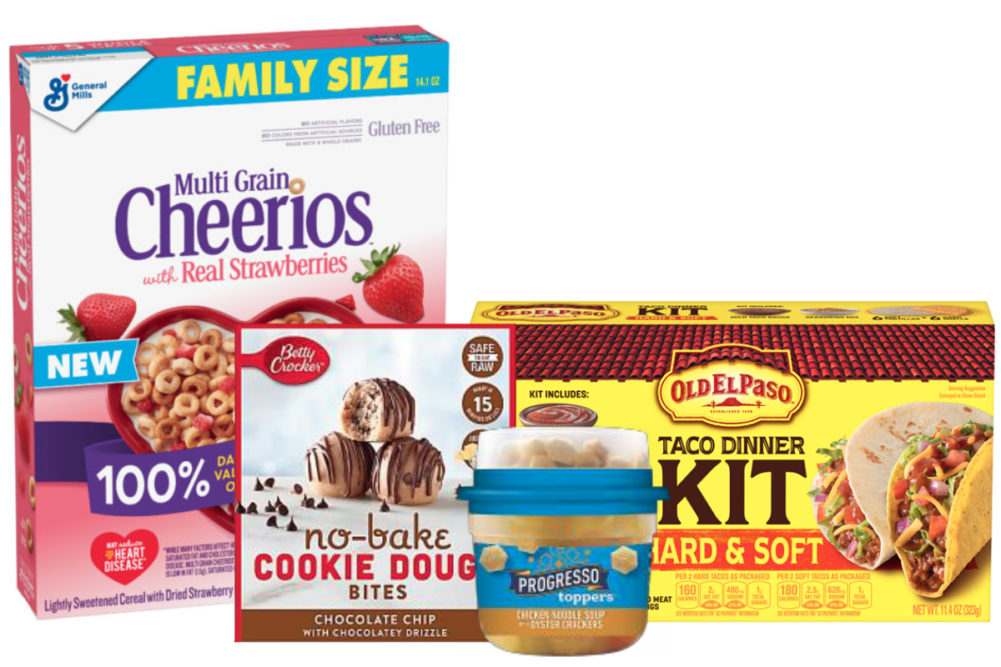MINNEAPOLIS — Executives at General Mills, Inc. expect continued strong demand for at-home eating beyond the pandemic, in part driven by tighter budgets due to the recession. This trend is poised to benefit the Minneapolis-based maker of Cheerios and Betty Crocker, said Jeffrey L. Harmening, chairman and chief executive officer.
“We expect more time at home, including more work from home, to be an ongoing part of consumer routines, meaning more opportunities for at-home eating occasions,” Mr. Harmening said during recorded prepared remarks ahead of an earnings call with investment analysts.
He added since the onset of the coronavirus outbreak, consumers continue seeking familiar brands to provide comfort during uncertain times. General Mills’ ongoing efforts to improve taste, nutrition and convenience of its products, in addition to a continued focus on brand-building and innovation, is creating loyalty among new and returning shoppers, he said.
Net earnings attributable to General Mills in the second quarter ended Nov. 29 totaled $688.4 million, equal to $1.12 per share on the common stock, up 19% from $580.8 million, or 96¢ per share, in the prior-year period. The increase in earnings reflected higher operating profit, lower net interest expense and higher after-tax earnings from joint ventures.
Net sales increased 7% to $4.72 billion from $4.42 billion.
“Our strong execution has generated winning in-market performance,” Mr. Harmening said. “Our retail sales are outpacing our competition, translating into broad-based market share gains across our major markets.
“With excellent performance through the first half, we remain on track to deliver on our three key priorities for fiscal 2021: competing effectively, everywhere we play; fueling investment in our brands and capabilities; and continuing to reduce our leverage.”
During the quarter, North America Retail segment sales increased 9% to $2.92 billion, driven by elevated demand for food at home due to the pandemic. US Meals & Baking sales increased 18%, while US Cereal sales climbed 4%, yogurt sales gained 3%, and US Snacks sales declined 2% compared to the year-ago quarter. Segment operating profit increased 9% to $702 million, benefiting from higher volume and fixed cost leverage in the supply chain, which was partially offset by higher operational costs to service demand, higher media and other general expenses. The prior-year period included a timing-related manufacturing benefit.
“The strength of our brand-building, supply chain and sales execution enabled us to hold or gain share in 8 of our top 10 US categories through the first half of this fiscal year,” said Kofi A. Bruce, chief financial officer.
General Mills’ Convenience Stores & Foodservice segment sales decreased 14% to $440 million, due to reduced away-from-home food demand related to the pandemic. Segment operating profit fell 32% to $78 million, driven by lower net sales and fixed cost deleverage in the supply chain.
“We continued to see double-digit declines on consumer traffic negatively impact the segment’s key away-from-home channels, including restaurants, schools, lodging and convenience stores,” Mr. Bruce said. “While the away-from-home industry is seeing headwinds, we are competing well, and we’ve gained market share in measured channels through the first half of fiscal 2021.”
Within the company’s Pet segment, net sales increased 18% to $460 million, and operating profit surged 48% to $19 million, primarily driven by volume growth and favorable net price realization and mix.
General Mills’ Europe & Australia business sales increased 8% to $467 million, and operating profit grew 14% to $36 million. In the Asia & Latin America segment, sales increased 5% to $430 million, and operating profit was $30 million, up 25% on a reported basis.
Within the company’s Cereal Partners Worldwide and Häagen-Dazs Japan joint ventures, second-quarter sales increased 7% and 12%, respectively, in constant currency. Combined after-tax earnings from joint ventures increased 46% to $36 million.
Management declined to provide a full-year outlook for organic net sales, adjusted operating profit and adjusted diluted earnings per share. The company said it expects full-year adjusted operating profit margin to be in line or better than the previous year.
“We expect the pandemic will drive continued elevated consumer demand for food-at-home, relative to pre-pandemic levels, through the remainder of the fiscal year,” Mr. Bruce said. “We expect third-quarter demand trends to be generally consistent with recent months, due to the ongoing virus concerns in many markets around the world, and we expect to continue to invest in our brands and capabilities to generate profitable growth over the long term and throughout the pandemic.
“Based on these assumptions, we expect to generate continued strong top- and bottom-line growth in the third quarter, with organic net sales growth roughly similar to the second quarter’s growth rate and an adjusted operating profit margin in line with the prior year.”
The company expects fourth-quarter net sales to exceed pre-pandemic levels but below the year-ago period, which occurred during the initial pantry-stocking phase in response to the coronavirus outbreak.






